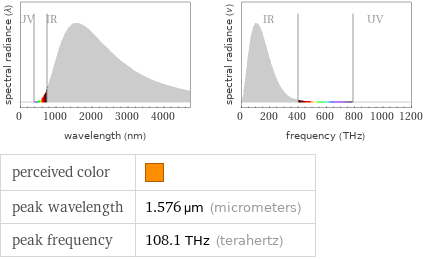Input interpretation

iron(III) oxide | melting point
Result

1565 °C (degrees Celsius)
Unit conversions

1838 K (kelvins)

2849 °F (degrees Fahrenheit)

3309 °R (degrees Rankine)

1252 °Ré (degrees Réaumur)

829.1 °Rø (degrees Rømer)
Comparisons as temperature

103 °C below melting point of titanium (1668 °C)

30 °C below temperature of a Bunsen burner flame (1870 K)

27 °C above melting point of iron (1538 °C)
Blackbody information

perceived color | peak wavelength | 1.576 µm (micrometers) peak frequency | 108.1 THz (terahertz)
Corresponding quantities

Thermodynamic energy E from E = kT: | 16 ceV (centielectronvolts)

Blackbody energy flux Φ from Φ = σT^4: | 647345 W/m^2 (watts per square meter)

Approximate luminous exitance from a planar blackbody radiator perpendicular to its surface: | 490408 lx (lux)